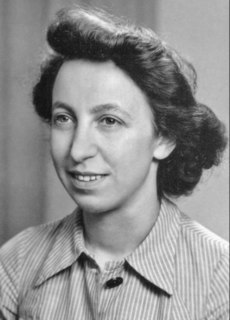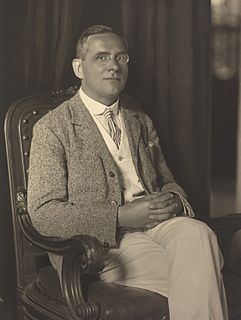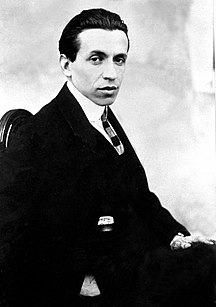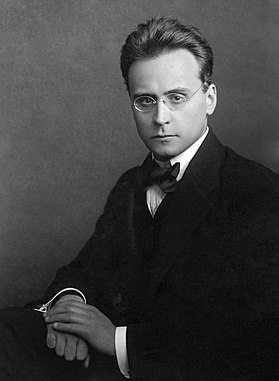 W
WEngelbert Dollfuss was an Austrian politician who served as Chancellor of Austria between 1932 and 1934. Having served as Minister for Forests and Agriculture, he ascended to Federal Chancellor in 1932 in the midst of a crisis for the conservative government. In early 1933, he dissolved parliament and assumed dictatorial powers. Suppressing the Socialist movement in February 1934 during the Austrian Civil War and later banning the Austrian Nazi Party, he cemented the rule of "Austrofascism" through the authoritarian First of May Constitution. Dollfuss was assassinated as part of a failed coup attempt by Nazi agents in 1934. His successor Kurt Schuschnigg maintained the regime until Adolf Hitler's annexation of Austria in 1938.
 W
WEmil Fey was an officer in the Austro-Hungarian Army, leader of the right-wing paramilitary Heimwehr forces and politician of the First Austrian Republic. He served as Vice-Chancellor of Austria from 1933 to 1934, leading the country into the period of Austrofascism under Chancellor Engelbert Dollfuss. Fey played a vital role in the violent suppression of the Republikanischer Schutzbund and the Social Democratic Workers' Party during the 1934 Austrian Civil War.
 W
WAbdul Rahman Ghassemlou was an Iranian politician and Kurdish leader. Ghassemlou was the Secretary-General of the Democratic Party of Iranian Kurdistan (KDPI) from 1973 until his assassination in 1989 by individuals suspected of being agents of the Islamic Republic of Iran.
 W
WTraian Grozăvescu was an Austro-Hungarian-born Romanian operatic tenor. Born in Lugoj, he served in the Austro-Hungarian Army in World War I. In 1922, following a disagreement with the Cluj Opera, he left for Vienna and sang at the Vienna State Opera, as well as at the Hungarian State Opera House and the Berlin State Opera, achieving great success.
 W
WHilde Meisel was a Jewish German socialist and journalist who published articles against the Nazi regime in Germany. While in exile in England, she wrote under the pseudonym Hilda Monte, calling for German resistance to Nazism in magazines, books and in radio broadcasts. She acted as a courier and repeatedly undertook secret operations in Germany, Austria, France and Portugal, although as a social democrat and Jew, it was extremely dangerous for her to do so. Other code names she used in exile were Hilde Olday, Selma Trier, Helen Harriman, Eva Schneider, H. Monte, Hilda Monte and Hilde Monte.
 W
WAlfred Gottfried Ochshorn was a Jewish Austrian communist student activist and fighter during the Spanish Civil War. At the end of the Spanish Republic he went to France where he worked as a translator for German troops while also active in forging papers to aid the French Resistance. After being betrayed by an informant, he was arrested in 1943 by the Gestapo and sent to the Mauthausen concentration camp. He died after being shot by a guard, Martin Bartesch, during an escape attempt.
 W
WTodor Nikolov Panitsa was a Bulgarian revolutionary figure, active in the region of Macedonia. He was one of the leaders of the left wing of the Internal Macedonian Revolutionary Organization.
 W
WAlberich Rabensteiner was a Cistercian monk who practiced at Heiligenkreuz Abbey. He was also a prior and an administrator at Stift Neukloster, Wiener Neustadt, Austria.
 W
WFriedrich Albert Moritz Schlick was a German philosopher, physicist, and the founding father of logical positivism and the Vienna Circle.
 W
WIgnaz Seipel was an Austrian prelate and politician of the Christian Social Party (CS), who served as Federal Chancellor twice during the 1920s.
 W
WKarl von Stürgkh was an Austrian politician and Minister-President of Cisleithania during the 1914 July Crisis that led to the outbreak of World War I. He was shot and killed by the Social Democratic politician Friedrich Adler.
 W
WTibor Szamuely was a Hungarian politician and journalist who was Deputy People's Commissar of War and People's Commissar of Public Education during the Hungarian Soviet Republic.
 W
WPius Walder was an Austrian lumberjack and poacher. His life and violent death led to ongoing conflicts in his home town and have been depicted in movies and books.
 W
WAnton Friedrich Wilhelm von Webern, known as simply Anton Webern, was an Austrian composer and conductor. Along with his mentor Arnold Schoenberg and his colleague Alban Berg, Webern was in the core of those in the circle of the Second Viennese School, including Theodor W. Adorno, Heinrich Jalowetz, and Ernst Krenek. As an exponent of atonality and twelve-tone technique, Webern exerted influence on contemporaries Luigi Dallapiccola, Krenek, and even Schoenberg himself. As a tutor, Webern guided and variously influenced Arnold Elston, Frederick Dorian, Matty Niël, Fré Focke, Karl Amadeus Hartmann, Philipp Herschkowitz, René Leibowitz, Humphrey Searle, Leopold Spinner, and Stefan Wolpe.
 W
WFranz Xaver Ziereis was the commandant of the Mauthausen concentration camp from 1939 until the camp was liberated by the American forces in 1945.